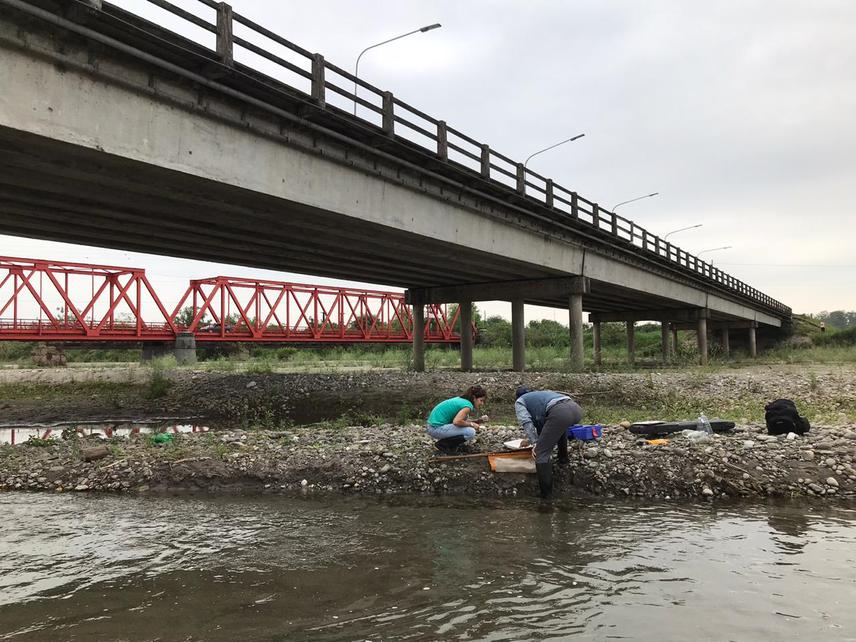Paola Alberti
This project has the following aims:
1) Assessing macroinvertebrates community structure and composition of the affected rivers by the sugar industry in Tucuman;
2) Identifying stakeholders who are related with this problem;
3) Analyzing stakeholders’ perceptions and social relationships regarding their opinions, uses,
actions, and motivations regarding watersheds and the impact of sugar industry;
4) Integrating the results of the natural and human dimensions of this problem,
5) Generating broader societal impacts via outreach and information to design strategies and public policies that contribute to the holistic treatment of watersheds and pollution.

Biotic samples collection in the Gastona River from the harvest season.
Human communities depend on watersheds for the physical place to live or work, but also other contributions from nature, such as food, drinking water, places for recreation and tourism (Zagarola et al, 2014). Therefore, it is important to implement sustainable use projects that integrate local communities to their watershed to achieve rational use and better management of resources. This the process this holistic approach favors human social well-being in the short and long-terms, thanks to the involvement of different stakeholders.
In Tucumán Province, a major land use in watersheds is for sugar plantations and rivers are often used as recipients of industrial waste from refineries. Previous research highlighted the ecological impact of this important industry on Tucumán’s river ecosystems. Indeed, ecological degradation became so acute that it came to the attention of decision-makers, leading to a court case between Tucumán and Santiago del Estero Provinces. Subsequently, the parties made an agreement regarding “Prevention of industrial pollution in the Río Hondo Reservoir,” which was signed by the national government, the two provinces and ten sugar companies. Based on this public policy, greater pollution controls were implemented, but only in certain cases, and water quality has improved, according to biotic indexes in comparison with previous periods (e.g., 2015-2016 to 1992-1993) (Dominguez et al., 2016). Despite this ecological achievement for an environmental policy, to date no analysis has been carried out on how these changes have affected the quality of life of people living with these rivers or how the two domains (social and ecological) interact.
This work seeks to provide new insights for strategies to solve complex environmental problems, since it investigates the ecological status of rivers and the relationships of stakeholders with this environment. The aim is to link the social valuation of rivers with the ecological value, and provide new tools to improve the link between them.